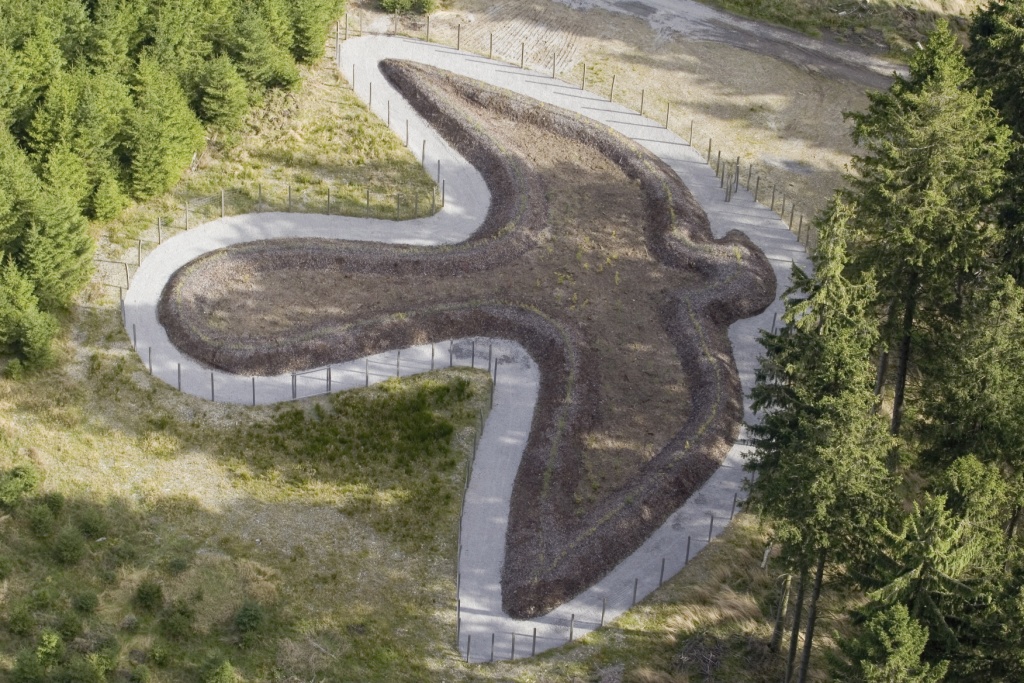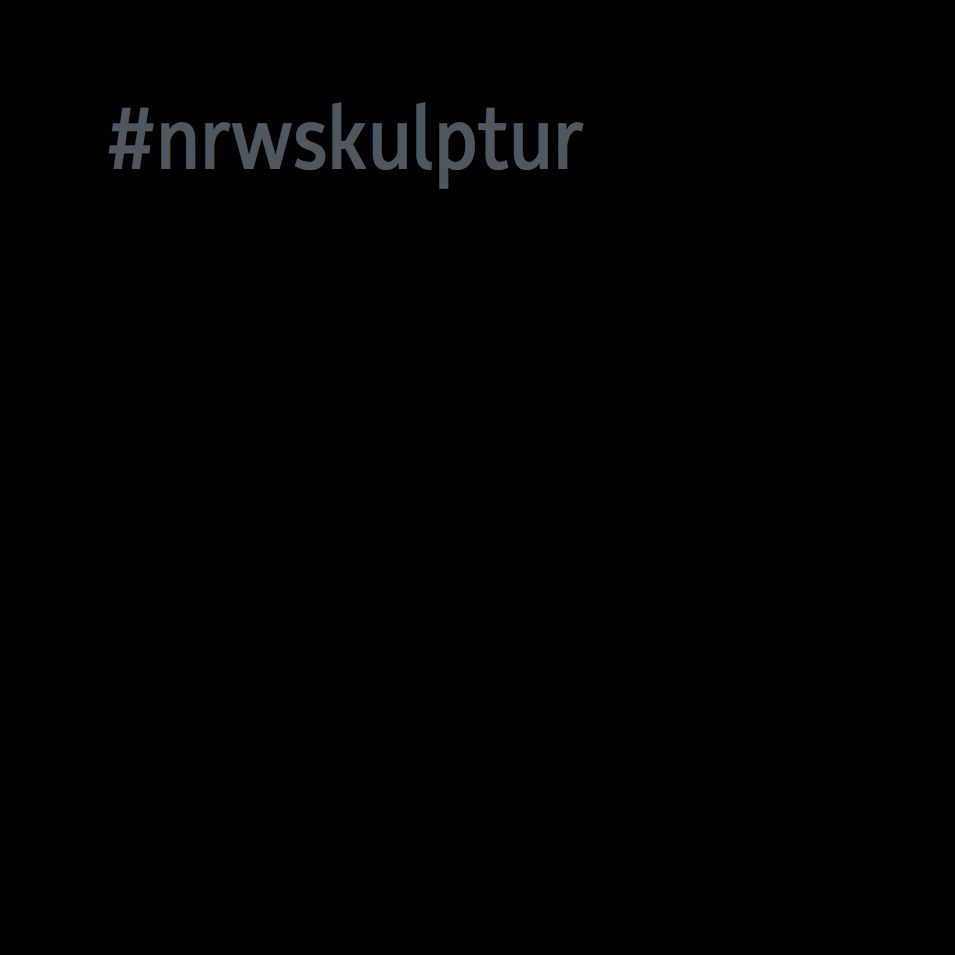The Monument of the Lost Falcon




In his land art, environmental artist Alan Sonfist brings together natural and cultural elements in order to illustrate humanity’s influence on nature. Here, he has drawn a drastically enlarged silhouette of a hovering falcon on the forest floor. The outline is made out of a 1-meter-high dirt wall, which has been planted with European larch seedlings. Roughly 350 other plants were added inside of the wall, all of which once existed in this landscape, but are now largely lost. As such, it is designed so that a natural forest will form in this small, enclosed area. Around the perimeter of the falcon, there is a two-meter-wide gray rubble path, which is then enclosed with a wire fence that separates it from the surrounding forest. The dirt construction, which can only be seen from higher ground, looks like an artistically designed and simultaneously unspoiled island amidst the otherwise forested area.
In this work, the artist makes reference to the peregrine falcon, which – much like the seedlings planted within its silhouette – can no longer be found in this area, despite having previously lived here for over 100,000 years. He not only points to the disappearance of the species, but also the lost unity of man and nature. As a domesticated hunting bird for thousands of years, the falcon is also a symbol of this traditional symbiotic relationship. The dirt wall that forms the bird’s outline is also a reference to early history: the earliest evidence of settlements in this region are Celtic ringforts (ca. 700 BC), which utilized similar earth walls for protection. Another point of reference are the monumental ancient dirt and stone paintings (around Nazca, Peru, ca. 700 BC, and in Cerne Abbas/England), which are also only fully visible from above.
Reference: www.waldskulpturenweg.de/skulpturen/der-falke/die-skulptur
Further reading: WaldSkulpturenWeg, ed.by the Arbeitsgemeinschaft WaldSkulpturenWeg, texts by Uwe Rüth, Cologne 2011.
Alan Sonfist
← Zur Startseite
Bad Berleburg, WaldSkulpturenWeg



